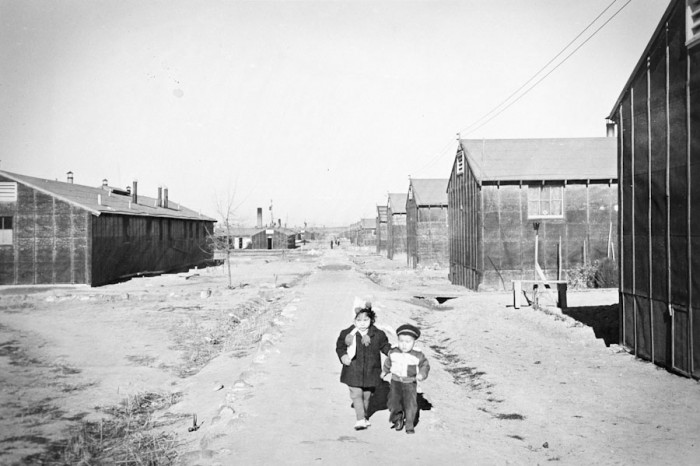
Internet sensation and internment survivor George Takei will have one more thing to celebrate when he comes to town to lead the Seattle Pride Parade this weekend.
Last week the National Parks Service presented Seattle-based Denshō with a $209,982 grant. The grant, one of 21 others totaling 2.9 million dollars, was awarded by the Japanese American Confinement Sites Program, the NPS’s effort to preserve the dark history of Japanese internment during World War Two.
Seattle’s Earshot Jazz Society also received a grant for a musical production called The Panama Hotel.
Denshō has an online collection of 800 interviews that are already available through video streaming. The grant will allow them to make the videos downloadable, so they can be edited for use in documentary films and educational projects.
“It is pretty innovative. Most heritage organizations don’t make their videos available like this.” Denshō’s Executive Director Tom Ikeda, explained.
Since 1996, Denshō — Japanese for ‘to pass on to coming generations’ — has taken on the task of curating the history of Japanese American incarceration.
In addition to the oral history archive, the Densho website also has an online encyclopedia featuring hundreds of articles on an array of subjects, including arts, legal orders, camp experiences, and in-depth histories of a long list of people, all part of the legacy of internment.
Seattle teacher and peace activist Akiko Kurose talks about her experience following the bombing of Pearl Harbor in an excerpt from the Denshō archive.
Following the attack on Pearl Harbor in 1941 by Japanese forces, President Franklin Roosevelt called for more than 120,000 Japanese Americans to be incarcerated in camps around the country. Japanese American populations flourished in many areas of the United States, especially along the West Coast at the time. Here in the Northwest, large communities on Bainbridge Island, and Seattle’s international district were among those pushed out of their homes and forced to abandon their property.
The Panama Hotel — a historical site in Seattle — was a pre-internment weigh station for many displaced Japanese Americans, some of whom left possessions behind there. Overall about 13,000 Japanese Americans were interned from Washington. They were primarily sent to camp Minidoka, near Hunt, Idaho.
Nearly 50 years later, Denshō began with a vision to make resources and materials form this era of American history accessible to educators, students and the interested public. Their current focus is the development of a digital archive. According to their website, the archive already houses 1,500 hours of visual histories, and more than 12,000 primary source documents including newspaper articles and photographs are available for free.
Though Denshō focuses on collecting the experiences of Japanese-Americans during the internment seventy-three years ago, a broader, less time-bound, intention is at play. The ‘about’ section of Denshō’s website shares a commitment to examining themes of prejudice, democracy, civic duty, tolerance and intolerance in an increasingly global landscape.

Ikeda says from Denshō’s infancy, it was always important to pass on the lessons learned from the Japanese internment to future generations. But after September 11, 2001, the long-standing relevance of Japanese American incarceration became even more apparent.
“After 9/11 it became very clear how important this work was because we were seeing hate crimes. People talk[ed] about Arab Americans in the same way they spoke about Japanese Americans.” Ikeda says.
The conditions leading to Japanese American interment in the 1940’s eerily paralleled the climate of post 9/11 America. Both situations shared a hostility toward people who looked like, or had the same ancestry as, the overseas enemy
With a vast and growing array of resources, Ikeda says Denshō works to put forth a variety of viewpoints and perspectives in the hopes of nudging young people to think critically about the world.
“[The students] can examine these materials in the same way they would examine news stories. We believe it is important for students to do this with a historical event. With these different perspectives, [to see] this is what happened and it was a mistake.”

